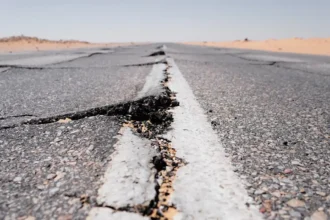India’s forests are vanishing at an alarming rate, despite what official reports might tell you. The reality on the ground shows a different picture from government claims. According to Dialogue.earth, India is losing its green cover rapidly.
The official data from India State of Forests Report (ISFR) claims that forest cover is growing. But independent studies paint a very different picture. Global Forest Watch reports that India has lost 2.33 million hectares (about 5.76 million acres) of tree cover since 2000.
Where Are Forests Disappearing?
On March 30, 2024, bulldozers cleared the Kancha Gachibowli forest in Hyderabad as students protested the cutting of the last trees. This is not an isolated case. Forests are being cut down in many places across India:
- Hasdeo Arand forest in central India
- Shahabad Mohammadpur forest in Delhi
- Mangar Bani forest in Haryana
The northeastern states of India are suffering the most forest loss. According to Indian Express, Assam lost 324,000 hectares (about 800,000 acres) of tree cover, the highest in the country. Other badly affected states include Mizoram, Arunachal Pradesh, Nagaland, and Manipur, which together account for 60% of India’s total tree cover loss.
Understanding Forest Loss Numbers
You might be confused about why there are different numbers for forest loss. This happens because the government counts plantations and non-forest areas as forest cover. When you plant a row of trees along a road, it’s not the same as a natural forest, but official reports count both the same way.
| What Government Claims | What Independent Reports Show |
|---|---|
| Net gain of 1,445 sq km of forest and tree cover since 2021 | Loss of thousands of hectares of actual forest |
| 25.17% of India covered by forests and trees | Many counted areas are plantations, not natural forests |
The technical term “tree cover” that reports use simply means areas with trees that can be seen from satellites. This doesn’t tell you if it’s a healthy forest ecosystem or just a few trees in a row.
What Are Deemed Forests?
You might hear about “deemed forests” in the news. These are areas that look like forests but don’t have official forest status. According to Byjus, these unofficial forest areas make up about 1% of India’s forest land. Recent policy changes have removed protections for these forests, making them easier to cut down.
Why This Is Happening
Forests are being cleared for many reasons. The biggest reasons include building new roads, dams, and mines. The government has changed laws to make it easier to use forest land for these projects.
The Forest Conservation Act amendments have weakened the protection that forests used to have. These changes remove safeguards for many forest areas, especially those called “deemed forests.”
Over 13,000 square kilometers of forest land is currently under what officials call encroachment (being used illegally by people or businesses). This shows how difficult it is to protect forests even with laws in place.
How This Affects People
Forest loss doesn’t just mean fewer trees. It impacts real people. The Van Gujjars, a pastoralist community (people who raise animals by moving from place to place), are losing their homes and way of life because of changing forest policies.
University students in Hyderabad protested when bulldozers started clearing the Kancha Gachibowli forest. They understand that these forests provide clean air and help fight climate change.
According to Global Forest Watch data reported by Utkarsh, Indian forests still act as a carbon sink – meaning they remove more harmful carbon dioxide from the air than they release. When we lose forests, we lose this benefit.
What The Future Holds
The Supreme Court has stepped in multiple times to stop illegal cutting of forests. In February 2025, the court will hear a case about the Forest Conservation Act amendments that have weakened forest protections.
Independent researcher Kanchi Kohli has highlighted how forest governance in India needs to consider both ecological and social value of forests, not just their economic potential.
According to the ISFR report, India’s total carbon stock in forests is estimated at 7,285.5 million tonnes, an increase of 81.5 million tonnes from 2021. But these official numbers don’t match what’s happening on the ground. You can view the full report at the Forest Survey of India website.
Looking Beyond the Numbers
When you walk through a real forest, you experience more than just trees. You see wildlife, plants, and entire ecosystems working together. This is what’s being lost when forests disappear, even if official reports show forest cover increasing.
Environment Minister Bhupender Yadav has spoken about balancing development with forest conservation. But the actions on the ground often favor development over protecting forests.
The gap between what officials say and what’s actually happening on the ground continues to grow wider. As you think about India’s forests, remember that what counts as “forest” in reports might not be the rich, diverse forests that truly benefit our environment.











